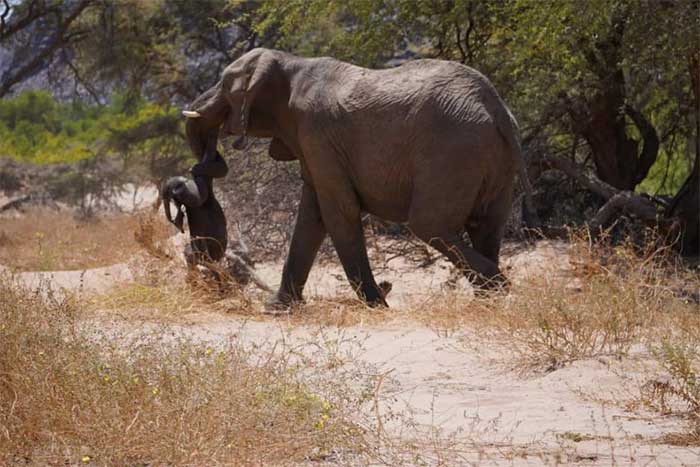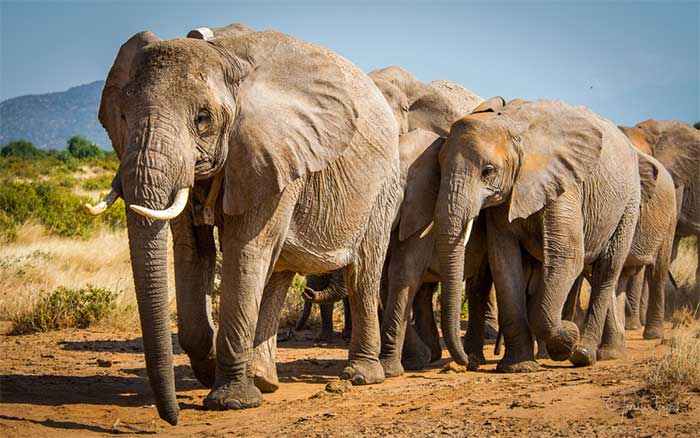The image of an African elephant mother using her trunk to carry the body of her calf and moving it around for several days has touched many hearts.
The photos were captured by staff at the Twyfelfontein Country Lodge, located in the Twyfelfontein Uibasen Conservancy, in the Huab Valley of the Kunene region in Namibia.

Mother elephant tightly wraps her calf’s body and carries it around – (Photo: PHILIP SHILONGO)
The images show the mother elephant using her trunk to wrap around the body of her calf, slowly walking across the grasslands.
William Stegmann, a staff member at Twyfelfontein Country Lodge, shared that the mother elephant, named Rosy, gave birth on October 27, 2022. Rosy is also the matriarch of a herd living in the area.
From the moment it was born, the calf was not very healthy and struggled to keep up with the herd as they traveled a long distance to find water. Just one day after its birth, the calf passed away.
The staff at Twyfelfontein Country Lodge observed the mother elephant carrying her calf’s body, moving it around with her herd and only placing it down when she needed to eat. The mother also ate less. For two days following the calf’s death, the mother did not leave its body.

The bond between mother elephants and their calves lasts from pregnancy, through nurturing, until the calf can survive on its own – (Photo: IUCN)
This behavior of carrying the body of a calf has also been observed in Asian elephants. Such behaviors are similar in primates, seemingly dispelling the common belief that only humans are aware of death.
However, the mechanisms or motivations behind a mother carrying her deceased calf are not yet fully understood by science.
According to scientists, the grieving response of the mother elephant may be due to the combination of the fact that elephants have a very long gestation period (22 months), which causes them to invest a lot of emotions into their young.
Their large brains, intelligence, and social nature may also help them “understand” death to some extent.
|
Elephants are incredibly intelligent and highly social creatures. They typically live in herds led by females. So far, they are one of the few animal species known to use tools – a clear sign of intelligence, and they can recognize themselves in mirrors – a trait shared only by apes and dolphins. According to Professor of Neuroanatomy and Animal Communication Bob Jacobs (University of Colorado, USA), these animals share the same basic neural structure with humans: they have a cortico-limbic structure in their brains related to emotions similar to those in humans. Although we can never know exactly what thoughts or feelings are in an elephant’s mind, there is reason to assume that this mammal also experiences joy, sadness, and pain depending on circumstances, similar to what humans feel. |





















































